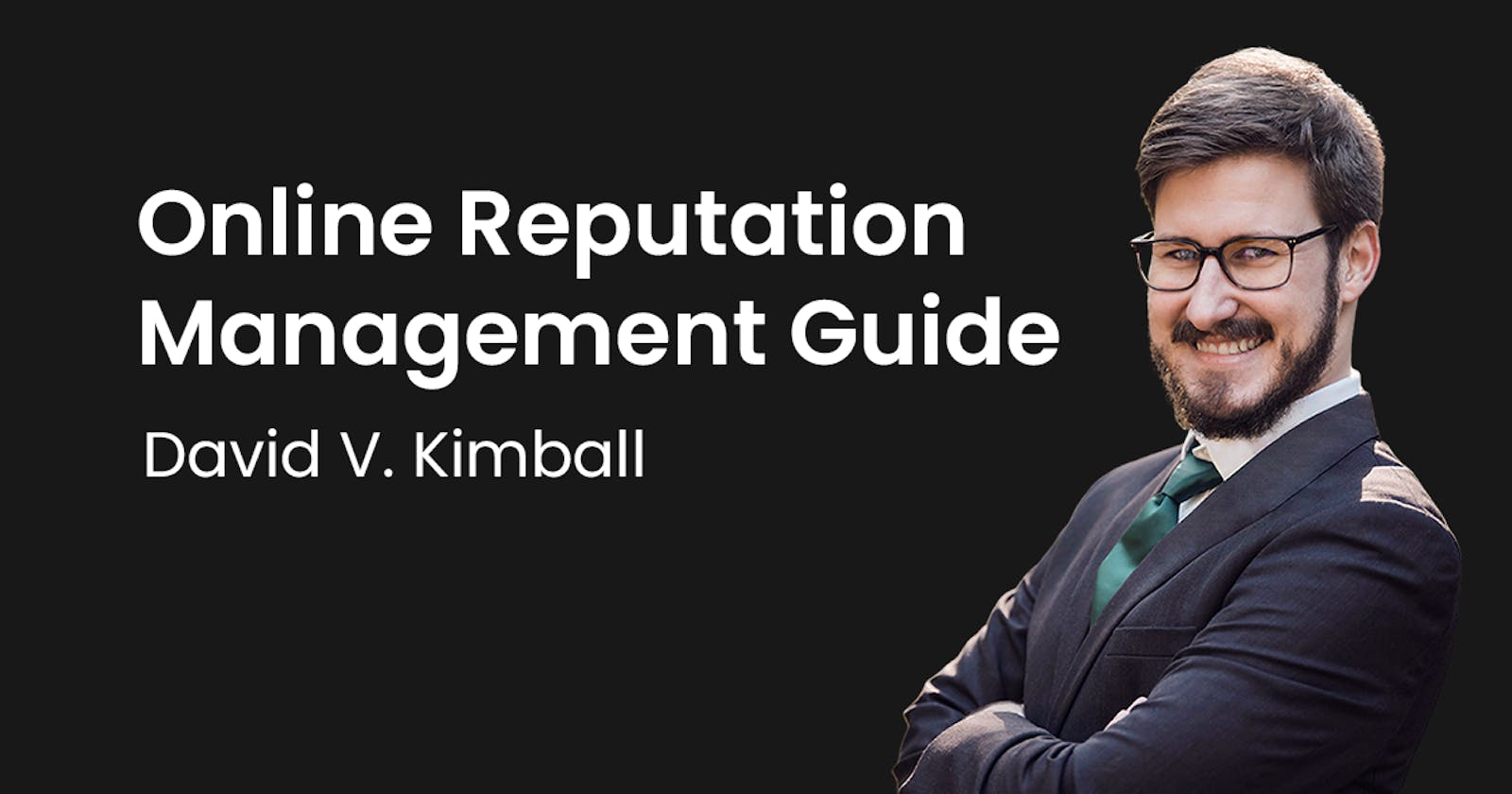Your Online Reputation Management Guide for 2023 and Beyond
What is online reputation management, and how can you leverage it for your brand or business?
Whether you’re managing an organization or an individual (person), maintaining an effective digital presence is vital for business. Your discoverability, marketability, and credibility are on the line. Online reputation is a key element of how your brand is perceived by potential customers, clients, or employers. If you don’t have your ducks in a row online, now’s the time to get it right, not later.
What is Online Reputation Management?
Broadly speaking, online reputation management is the discipline of proactively controlling the connected digital footprint of an individual or group. A positive online reputation can help you be perceived as an authoritative player in your space, regardless of your industry. This can span social media sites like Twitter, LinkedIn, Facebook, Instagram, or YouTube — or directory sites like Foursquare, Yelp, Google Business Profile, or Apple Maps. The platforms you decide to optimize will largely depend on your target audience and business outcome goals. Some platforms simply require a “set and forget” approach, whereas the majority require you to be more proactive in your management.
If you’ve ever created a profile for yourself or your business online, you’ve participated in online reputation management in some way. Every decision you made when creating that profile, from the selfie profile picture you selected, to inputting your real, actual birthday in the “birthday” field all help shape the potential of your online reputation effectiveness. Every piece of content you post is telling a story about you, and this is reflected in your online reputation as well. Your replies to inbound messages on Twitter, or a leaked Instagram direct message — all of this affects your online reputation in varying degrees.
You can organize online reputation management into four key areas:
Profile/listing optimization
Content marketing and curation
Social media listening and engagement
Reviews strategy and response
Why is Online Reputation Management Important?
A strong online reputation is important for multiple reasons. First, managing your reputation effectively online can help you get discovered. Secondly, a positive reputation helps establish your credibility and can solidify your authority within a space. Thirdly, a well-maintained online reputation can drive business.
Get Discovered
As online directories continue to become more sophisticated, users rely on online discovery mediums to get solutions to their problems. When was the last time you looked in a phone book to find your closest gas station? The very notion seems comical to any current-day smartphone owner. 45% of the world own smartphones, and likely wouldn’t think of anything other than a smartphone to get that quick answer.
Therefore, optimizing your digital presence for maximum discovery potential is paramount. It’s not a question of whether or not you should be on digital platforms, but rather a question of on which digital platforms you should be present. It’s never a good idea to try and be everywhere, so instead focus on your strongest potential platforms.
Know your audience. In order to know where you should be, you have to know where your target audience is first. What does your research say? Survey your existing audience or dig into analytics on your website and figure out where they spend their time. Maybe you’re a brick-and-mortar arts and crafts shop, and 40% of your website’s traffic is directly from Google organic search. You should be turning your attention to your Google My Business profile. Is it full of current and accurate location data? Is the phone number up to date? Does it have an appealing cover photo? These are a few examples of what optimizing a profile looks like.
Once you know where your audience spends time and determine the platforms on which to focus, you’ll want to own those profiles and listings. Literally, in some cases, you’ll need to make an account and claim a listing if it already exists to own it or create a new one if it doesn’t exist yet. I use profiles and listings interchangeably here because the principles are the same. A listing is just a more specific type of profile that’s listed in a particular directory, like a business Yelp page or a Google My Business page. Businesses will likely want listings in a variety of business directories depending on their industry. A staffing company might want to optimize its Indeed listing, whereas an HR company might care more about its Glassdoor profile.
After you own the pertinent listings and profiles, you can begin optimizing them. Above all, make sure you are building your profiles with current, accurate, consistent, and complete data. Fill in every field that’s available to you, as leaving any stone left unturned is missing out on discovery potential. That includes description fields that talk about you or your company, website fields where you should link to your website homepage, and other contact information. Assuming you optimize multiple profiles, make sure they’re as similar as possible — consistency is king. From an SEO perspective, authoritative websites agreeing with others will improve the rank of your listings. For example, if your Facebook page’s address matches your Yelp profile’s address exactly, Google will trust that data even more, especially if it matches up with its own Knowledge Graph data.
Use consistent, branded visuals. For an individual, this can mean using the same professional headshot for each of your profile pictures. For a company, this can mean incorporating the brand colors into the cover photo. Be intentional about your choices and think about how each piece fits into the element of the profile. Use a 1:1 aspect ratio image for your profile picture, and an image that works in both square and circle treatments. Test, test, test. Create a dummy profile if you have to. The look of your profiles matters, so make sure you’re using the correct specs and accounting for a variety of devices and screen sizes.
Become Credible
Building profiles and listings with good, complete data means you can now focus on producing content. Whether you’re creating original pieces yourself or curating content, your posts will reflect the kind of person you are: what you like to talk about, what you think about, and the larger message you want to send. This is your brand voice. Think very intentionally about it. Everything you post, like, or engage with in some way is not only another chance to be discovered, but also an opportunity to build a history of online interactivity. The more present you are, the more authoritative you seem — assuming you’re publishing influential, valuable content and meaningfully connecting with others on these platforms.
Say you’re managing a business. After a few months of managing your listings, hopefully, you’re getting reviews. Both negative and positive, you should be responding to them. Keep in mind, generally speaking, reviews are different than most social media messages. You can’t delete reviews simply because you don’t like them, you only have a chance to reply once, and they’re always public. Unlike the privacy of DMs or the power you have to delete comments on your own posts, it is tougher to control reviews. Of course, this is by design. Your ability to respond both quickly and tactfully will significantly impact prospects’ perception of you. Not only should you be addressing any concern of the reviewer, but you are taking this opportunity to communicate to onlookers that you care. Nothing looks worse than a rude or dismissive response to a negative review that was posted 7 months after the initial review was posted.
More reviews are almost always better than less. The utility of reviews is to accurately reflect the experience of a user. Google, Facebook, Yelp, and other platforms are fairly strict about the practice of review gating — meaning, you can’t simply engage with users that had positive experiences and ask for reviews from them only, you have to engage everyone. This can seem counterintuitive since you don’t probably feel it’s in your best interest to ask for a review from someone who had a bad experience. The solution is to ask for reviews often from everyone. If you’re providing a good product or service, then by and large, you’ll get good reviews. Expect outliers and trolls, they just come with the territory. Google, Yelp and others have policies against fake reviews and reviewers, so if you feel something is fishy you can report the offending accounts. So use that option when you need to. Reviews aren’t all negative, though — make sure to celebrate successes when you get hearty 5-star praise.
Drive Business
Optimized profiles: check. Responding and engaging with users: check. You’ve now established yourself or your company as a leader in your space. People are discovering you and your influence is growing. Now it’s time to play your cards right so you can drive potential customers, clients, and employers to do business with you. How do you do this? By including a call to action on every single one of your profiles.
When it comes down to it, mediums like social media sites, listing directories, and SERP snippets are simply the conduit to get to you. Managing your online reputation properly means you have the end goal in mind. Getting discovered first and establishing trust second is the path to eventually connecting with someone — that’s what all of this is for!
Determine your ideal customer journey. What would you like a prospect to do? What is the one place you want to drive a client towards? Maybe it’s a website. That means every website field, in every one of your profiles should link to that one destination. If they want to call you, how are you accommodating for that? Use one phone number for every listing/profile. Pick one contact email to use. You get the idea — figure out where you want customers to end up, then use every presence you have to funnel them toward that.
Google Business profile has analytics around how often visitors clicked on driving directions, phone numbers, or a website link on your listings. Facebook allows you to place a call to action button on the top of your business page. YouTube lets you link to a connected website at the end of a video — assuming you’ve earned the feature. These are all examples of thinking strategically about using your presence to drive toward your goals. Maybe 80% of clicks on your Google listings are for your website? Try optimizing your landing page for Google traffic. Your audience on Facebook is more comfortable sending you a Messenger message over an email? Make the call to action button a Facebook Messenger button. Do viewers of your YouTube video want to check out your eBook? Give them a link to that eBook at the end instead of getting them to your homepage. Just a few examples.
Closing Thoughts
Online reputation management is an exciting discipline. You have the power to shape perceptions about yourself or your company and get to observe how the actions you take manifest into your realized brand online. As long as you’re being truthful, putting your best foot forward, and thinking intentionally about where you’re spending your time online, success will follow.

